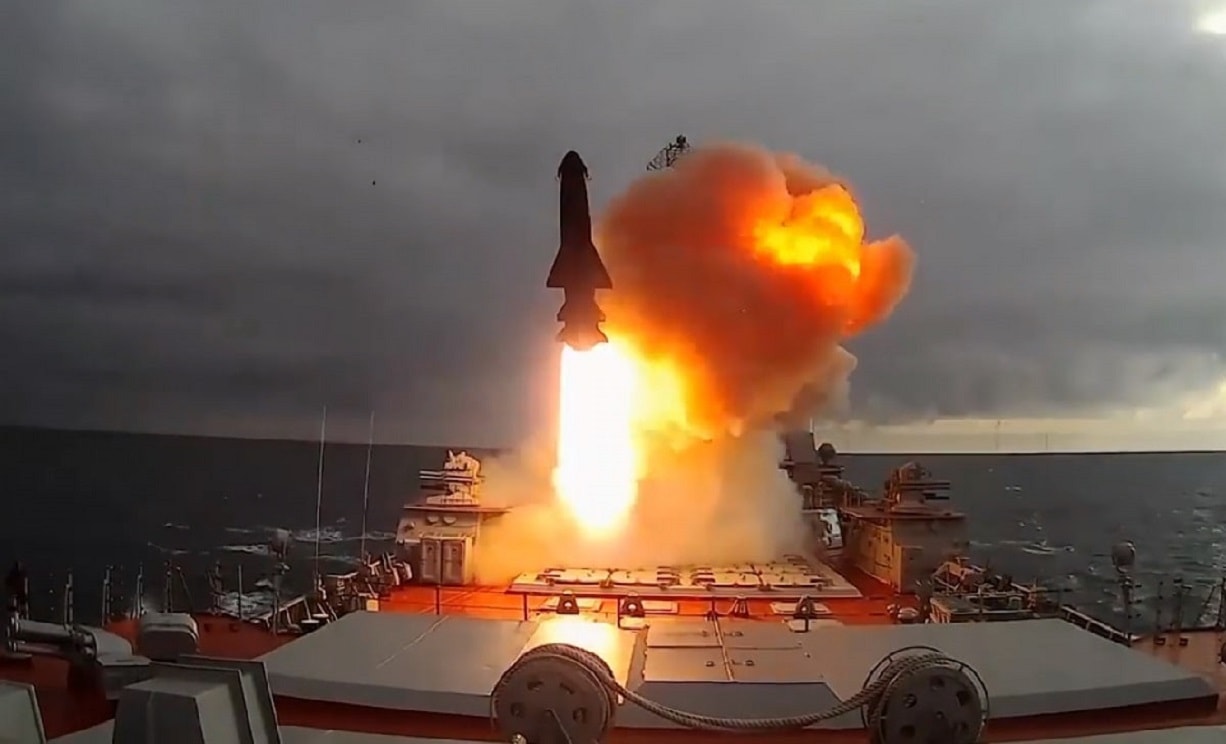Serial Deliveries of the Tsirkon Hypersonic Missile Have Begun: The current Russian Navy is largely a shell of the once mighty Soviet naval force. It lacks the number of vessels and has struggled to keep many of its largest warships in working order. Yet, this week, Moscow showed that it is committed to revitalizing its sea power as it announced serial deliveries of the state-of-the-art Tsirkon (3M22 Zircon) hypersonic missile have begun, state media reported.
(Subscribe to Our YouTube Channel Here)
“We have launched serial deliveries of the Navy-based Tsirkon hypersonic missiles,” Defense Minister Sergey Shoigu told reporters at the Russian Defense Ministry board meeting, the final for the year.
“The frigate Admiral of the Fleet of the Soviet Union Gorshkov with top-notch Tsirkon seaborne hypersonic missile systems undergoes final preparations before embarking on a mission in the world ocean,” Shoigu added.
New Submarine Commissioned
The Russian defense minister added that the Generalissimus Suvorov nuclear-powered submarine, armed with Bulava ballistic missiles, had been commissioned with the Russian Navy.
“Nuclear submarines perform planned combat missions in their designated areas at sea. Another nuclear-powered submarine, the Borei-A class submarine Generalissimus Suvorov armed with Bulava ballistic missiles, has been accepted into the Navy,” Shoigu added
It was last month that the fourth-generation Borei-A boat completed her sea trials and was being prepared for handover to the Russian Navy. It has been a long time coming as the submarine was laid down on December 26, 2014, and only removed from the slipway last Christmas Day. The submarine is set to join the Pacific Fleet in the New Year.
Greater Missile Capabilities
Russia’s Tsirkon hypersonic missile has been one of the weapon systems repeatedly touted by Russian President Vladimir Putin, who in his state-of-nation address to the Federal Assembly in February 2019, said it was capable of developing a speed of about Mach 9 (nine times the speed of sound) and its striking range capability could exceed 1,000 km.
The plans to develop the Tsirkon were announced by then-Deputy Defense Minister Vladimir Popovkin in February 2011, while the first test flights of the hypersonic missile began in 2015.
The missile was engineered and produced by the Research and Production Association of Machine-Building, a subsidiary of Tactical Missiles Corporation, based in the town of Reutov in the Moscow Region. It was last year on Christmas Eve that Putin announced that the Tsirkon hypersonic missile system had conducted a salvo launch and the tests had been held “successfully and impeccably.” Russia had begun the first tests of the Tsirkon hypersonic missile from an underwater carrier, the nuclear-powered submarine Severodvinsk, earlier in 2021.
The Tsirkon hypersonic missile was also test-fired to the longest possible range this past May, wrapping up the weapon’s state trials from a surface carrier, the Northern Fleet’s frigate Admiral Gorshkov. The warship fired the missile from the Barents Sea against a naval target in the White Sea at a distance of about 1,000 km.
The hypersonic weapons will give Russia greater naval capabilities.
Author Experience and Expertise: A Senior Editor for 19FortyFive, Peter Suciu is a Michigan-based writer. He has contributed to more than four dozen magazines, newspapers, and websites with over 3,200 published pieces over a twenty-year career in journalism. He regularly writes about military hardware, firearms history, cybersecurity, politics, and international affairs. Peter is also a Contributing Writer for Forbes and Clearance Jobs. You can follow him on Twitter: @PeterSuciu.

